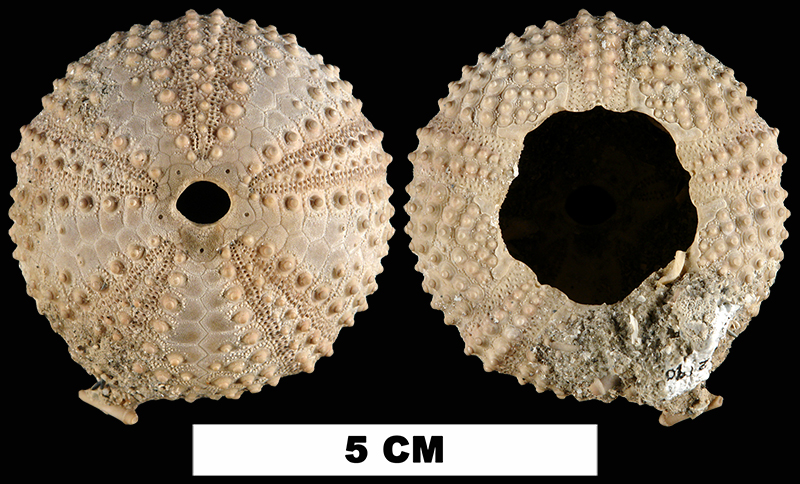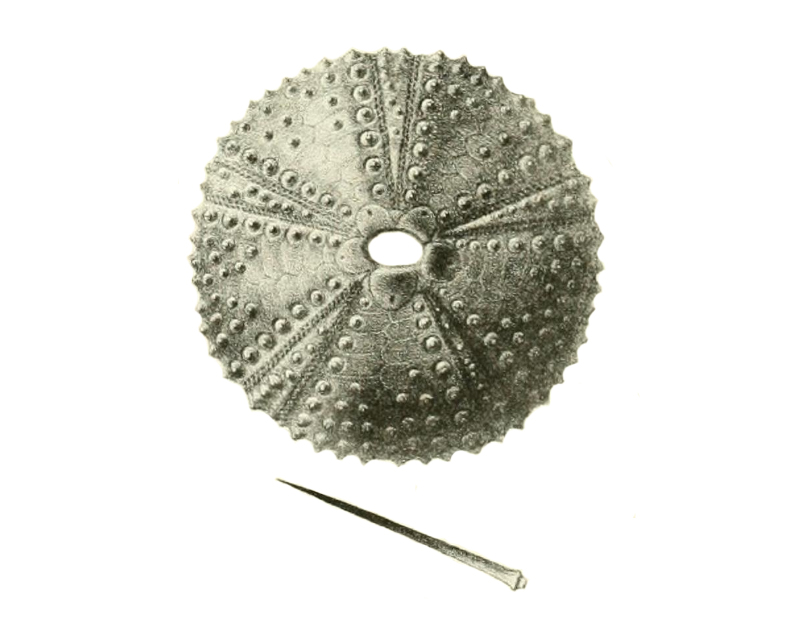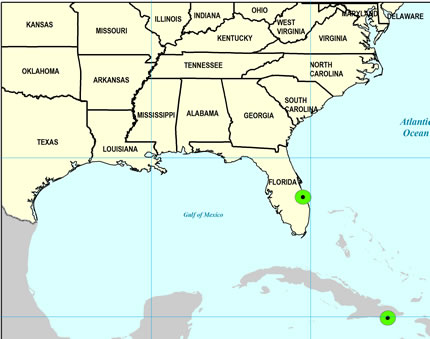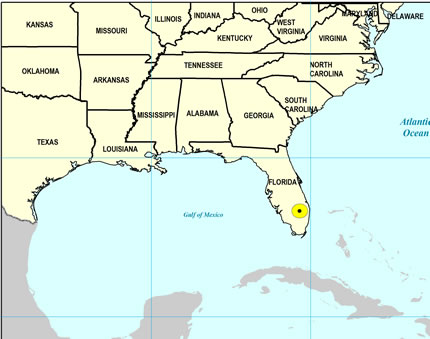
Arbacia punctulata

- Phylum: Echinodermata
- Class: Echinoidea
- Order: Arbacioida
- Family: Arbaciidae
- Genus: Arbacia
- Species: Arbacia punctulata (Lamarck, 1816)
Geological Range
Middle Pleistocene to Late Pleistocene; Recent.
Paleogeographic Distribution
Cuba to southern Florida.
Remarks
For information on the modern distribution of the species, see WoRMS.
To access the original description (Lamarck, 1816) in its original formatting through the Biodiversity Heritage Library, click here.
First English Description (from Holmes, 1860, p. 5):
"DESCRIPTION. Disk orbicular; upper surface convex, often sub-conical; ambulacral plates, with two purple bands of pores in pairs, extending from basal to anal aperture, having one row of large tubercles on each side; the interambulacral spaces on the dorsal part of the shell without tubercles, or the fine granules which cover the plates around their base; the sutures of the angular plates distinct; dorsal aperture oval; spines aciculariform, with purple points; those on the base spatulariform.
This fragile shell is seldom obtained in a perfect state from the Post-Pleiocene beds, and never with the spines attached; the specimen from which our figure is taken was procured from excavations made for the tidal drains in the upper part of the city of Charleston, and kindly presented to me by Dr. Wm. T. Wragg, the Alderman under whose superintendance the work was done. Fragments of the shell, and perfect spines, are often found in the sands of the Post-Pleiocene. It is the most common species now living upon the Carolina sea-coast.
[...] Locality. Charleston; Simmons' Bluff, St Paul's; Wando. Museum, College of Charleston; Cabinet F. S. H."
To access this description in its original formatting through the Biodiversity Heritage Library, click here.
Stratigraphic Occurrences
- Late Pleistocene
- Anastasia Formation (S. FL)
- Jaimanitas Formation (Cuba)
- Middle Pleistocene
- Bermont Formation (S. FL)



